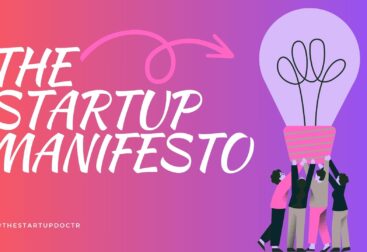Starting a business is like embarking on a thrilling adventure. You have an idea, a vision, and a partner by your side. However, just like in any journey, there can be bumps along the way. A partnership crisis can feel like a massive roadblock, but it’s not insurmountable. Rebuilding trust with your co-founder is not just possible; it’s essential for the survival and success of your startup. Let’s explore how to navigate through this challenging period, using practical steps and real-life examples.
Acknowledge Issues
The first step in resolving any partnership crisis is to acknowledge that there is a problem. Ignoring issues only allows them to fester and grow. Acknowledge the problems honestly and openly.
Example: The Honest Discussion
Consider the case of Sara and John, co-founders of a tech startup. Sara felt that John was making too many unilateral decisions without consulting her. On the other hand, John believed Sara was too hesitant, slowing down the decision-making process. The tension escalated until their mutual friends suggested a sit-down to address their issues.
During this discussion, they laid everything on the table. Sara expressed her frustration about being sidelined, while John admitted he felt pressure to make quick decisions. This honest acknowledgement of issues was the first step toward mending their relationship.
The Power of Acknowledgment
Psychologically, acknowledgement of issues is a fundamental step in conflict resolution. According to the Conflict Resolution Network, acknowledgement involves recognizing the other person’s perspective and validating their feelings. This doesn’t mean you agree with their perspective but rather that you understand and respect it. This process helps in reducing defensiveness and opening the door to constructive dialogue.
Real-Life Case Study: Airbnb’s Early Days
In the early days of Airbnb, co-founders Brian Chesky, Joe Gebbia, and Nathan Blecharczyk faced significant disagreements over the company’s direction and their roles within it. They held regular meetings to air grievances and discuss their visions for the company. By acknowledging each other’s concerns and working through them, they were able to build a stronger, more cohesive leadership team.
Set Boundaries
Once the issues are out in the open, it’s crucial to set clear boundaries. Define roles and responsibilities to prevent future conflicts.
Defining Roles Clearly
Taking a leaf out of the book of the famous Hewlett-Packard (HP) founders, Bill Hewlett and Dave Packard, setting clear boundaries can significantly aid in resolving conflicts. Bill and Dave created a management style known as “The HP Way,” which included clearly defined roles and responsibilities, a culture of respect, and open communication.
By following a similar approach, Sara and John decided to outline their specific roles. John would handle product development and Sara would focus on marketing and customer relations. This division of labour helped them to respect each other’s domain and reduced the overlap that caused friction.
Role Clarity in Teams
According to organizational behaviour theory, role ambiguity can lead to confusion, stress, and conflict within teams. Role clarity ensures that each team member knows their responsibilities and the expectations placed on them. This clarity is essential in reducing misunderstandings and fostering a cooperative work environment.
Practical Tip: Use a Responsibility Assignment Matrix (RACI)
A Responsibility Assignment Matrix, often called a RACI chart, is a simple tool to delineate roles and responsibilities within a team. It clarifies who is Responsible, Accountable, Consulted, and Informed for each task. Implementing a RACI chart can help Sara and John ensure that all aspects of their startup are covered without stepping on each other’s toes.
Realign Vision
After setting boundaries, it’s essential to realign your vision. Conflicts often arise from a divergence in goals and aspirations. Revisit the original vision and ensure both parties are still on the same page.
Example: Revisiting the Vision
Take the case of the co-founders of the social media platform Buffer, Joel Gascoigne and Leo Widrich. In their early days, they faced disagreements about the direction of the company. Joel envisioned a transparent and open company culture, while Leo was more focused on rapid growth.
To resolve this, they revisited their initial vision and goals. They took a retreat to disconnect from daily operations and engaged in deep conversations about their aspirations. This process helped them realign their vision and agree on a path forward, balancing transparency with growth.
Vision Alignment in Leadership
Leadership theories emphasize the importance of a shared vision. According to transformational leadership theory, leaders who inspire a shared vision can foster unity and commitment among their followers. This principle applies to co-founders as well, where a shared vision ensures that both parties are working towards the same goals.
Real-Life Case Study: Google’s Co-Founders
Larry Page and Sergey Brin, co-founders of Google, had a shared vision of organizing the world’s information and making it universally accessible and useful. Despite their differing personalities and approaches, their common vision kept them aligned and focused on their mission. This shared vision was crucial in navigating the challenges and disagreements they encountered along the way.
Improve Communication
Improving communication is the cornerstone of rebuilding trust. Effective communication helps in understanding perspectives and avoiding misunderstandings.
Example: Regular Check-ins
Consider the example of two friends, Jane and Lucy, who started a food delivery service. As the business grew, they found themselves arguing more frequently. They decided to implement regular weekly check-ins to discuss any concerns or updates.
These check-ins provided a structured environment for open communication. They used these meetings to clear up misunderstandings, share progress, and align on decisions. Over time, this practice greatly improved their working relationship and trust in each other.
Communication in Conflict Resolution
Effective communication is a key component of conflict resolution theories. The Thomas-Kilmann Conflict Mode Instrument identifies different conflict-handling styles, highlighting the importance of collaboration and communication in resolving disputes. Open and honest communication helps in understanding the root causes of conflicts and finding mutually beneficial solutions.
Practical Tip: Use Active Listening Techniques
Active listening involves fully concentrating, understanding, responding, and then remembering what is being said. Encourage active listening during meetings by summarizing what the other person has said before responding. This ensures that both parties feel heard and understood, reducing the likelihood of misunderstandings.
Take Responsibility
Taking responsibility for your actions and mistakes is crucial in rebuilding trust. It shows maturity and a willingness to grow.
Example: Owning Up to Mistakes
Reflect on the situation at the startup Zenefits, where co-founders Parker Conrad and Laks Srini faced a crisis when regulatory issues arose due to improper practices. Parker, the CEO, took responsibility for the missteps, which eventually led to his resignation. This act of taking responsibility was pivotal in beginning the process of regaining trust among the stakeholders and his co-founder.
While the outcome was severe, it underscores the importance of owning up to mistakes. In a less drastic scenario, Sara might apologize to John for not being more decisive, and John could acknowledge his mistake in sidelining Sara.
The Role of Accountability in Leadership
Accountability is a critical aspect of effective leadership. According to leadership theories, leaders who hold themselves accountable demonstrate integrity and build trust within their teams. This principle applies to co-founders, where mutual accountability fosters a culture of trust and respect.
Practical Tip: Implement a Culture of Accountability
Create an environment where taking responsibility is encouraged and valued. Recognize and reward accountability within your team. This can be done through regular performance reviews, feedback sessions, and public acknowledgements of mistakes and learnings.
Foster Positivity
In the aftermath of a crisis, it’s essential to foster a positive environment. Celebrate small wins, acknowledge each other’s contributions, and maintain a supportive atmosphere.
Example: Celebrating Successes
Tony Hsieh, the late CEO of Zappos, was known for fostering a positive company culture. He believed in celebrating both small and large successes to keep the team motivated and united. Similarly, Sara and John decided to celebrate milestones, no matter how small. This helped them to focus on the positives and appreciate each other’s efforts, reinforcing their partnership.
Positive Organizational Behavior
Positive Organizational Behavior (POB) focuses on the study and application of positively oriented human resource strengths and psychological capacities. According to POB, fostering a positive work environment can lead to improved performance, job satisfaction, and employee well-being. Applying these principles can help co-founders rebuild trust and maintain a healthy partnership.
Practical Tip: Practice Gratitude
Encourage a culture of gratitude within your startup. Regularly express appreciation for your co-founder’s contributions. This can be done through verbal acknowledgements, written notes, or public recognition. Practising gratitude can strengthen your partnership and create a more positive and supportive work environment.
Here’s What Else to Consider
Rebuilding trust is not just about resolving the immediate issues. It’s a continuous process that requires dedication and commitment. Here are a few more considerations:
1. External Mediation
Sometimes, it’s helpful to bring in an external mediator. A neutral third party can provide an unbiased perspective and facilitate difficult conversations.
Example: Professional Mediation
When the co-founders of Reddit, Alexis Ohanian and Steve Huffman, faced conflicts, they sought the help of Y Combinator’s Paul Graham. His mediation helped them navigate through their disagreements and refocus on their shared goals.
Mediation in Conflict Resolution
Mediation is a widely recognized method in conflict resolution, involving a neutral third party who assists the disputing parties in reaching a mutually acceptable agreement. According to the Harvard Negotiation Project, mediation helps in addressing underlying interests and finding creative solutions.
Practical Tip: Choose the Right Mediator
Select a mediator who understands your
industry and has experience in conflict resolution. This could be a mentor, advisor, or professional mediator. Their expertise can provide valuable insights and facilitate productive discussions.
2. Building Emotional Intelligence
Investing in building emotional intelligence can significantly enhance your ability to manage conflicts and rebuild trust. Understanding and managing your emotions, and being empathetic towards your co-founder’s feelings, can lead to more constructive interactions.
Emotional Intelligence in Leadership
Emotional Intelligence (EI) involves the ability to recognize and manage your own emotions and the emotions of others. According to Daniel Goleman’s model of EI, the key components are self-awareness, self-regulation, motivation, empathy, and social skills. High EI is associated with better leadership, communication, and conflict-resolution skills.
Practical Tip: Develop Emotional Intelligence
Engage in activities that enhance emotional intelligence, such as mindfulness practices, empathy exercises, and reflective journaling. Seek feedback from peers and mentors to gain insights into your emotional responses and areas for improvement.
3. Continuous Learning and Development
Invest in learning and development. Attend workshops, read books, or take courses on leadership, communication, and conflict resolution. The knowledge and skills gained can equip you to handle future conflicts more effectively.
Example: Ongoing Development
The co-founders of Warby Parker, Neil Blumenthal and Dave Gilboa, regularly participated in leadership training and development programs. They believed in continuous learning to enhance their leadership skills and improve their partnership. This commitment to personal and professional growth helped them navigate challenges and build a successful company.
Practical Tip: Establish a Learning Culture
Create a culture of continuous learning within your startup. Encourage team members to pursue professional development opportunities and share their learnings with the team. This not only enhances individual skills but also fosters a culture of growth and improvement.
Final Thoughts
A partnership crisis can be daunting, but it’s also an opportunity for growth. By acknowledging issues, setting boundaries, realigning vision, improving communication, taking responsibility, and fostering positivity, you can rebuild trust with your co-founder. The journey may be challenging, but with patience and commitment, you can emerge stronger and more united than ever before.
Remember, every great partnership, from Steve Jobs and Steve Wozniak to Larry Page and Sergey Brin, has faced its share of challenges. What sets successful co-founders apart is their ability to navigate through crises and come out stronger on the other side. Your startup’s future depends on the strength of your partnership. Embrace the challenge, and use it as a stepping stone towards building a resilient and thriving business.












